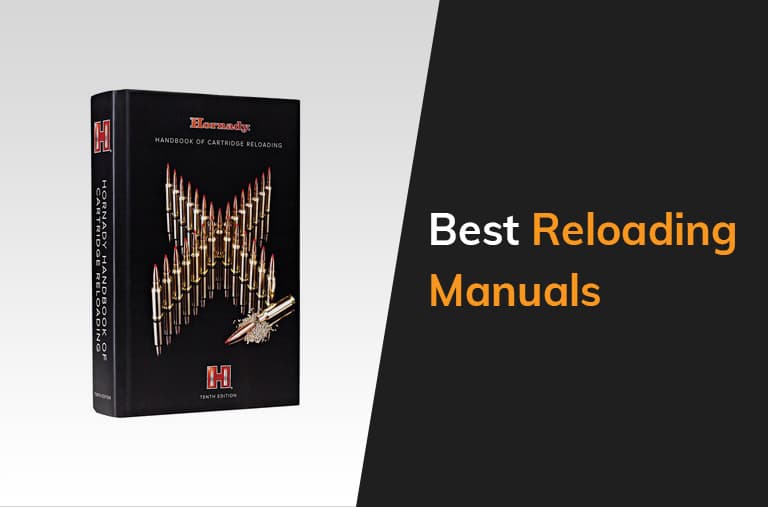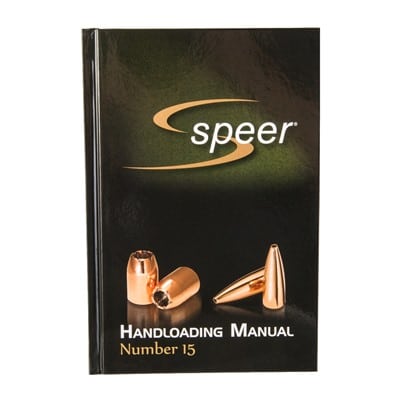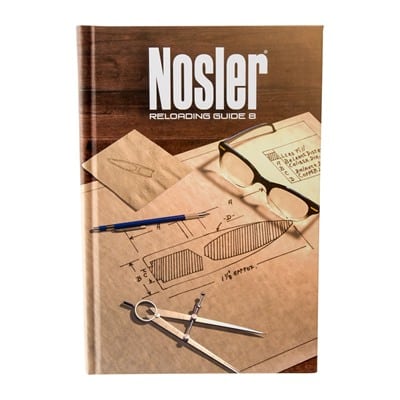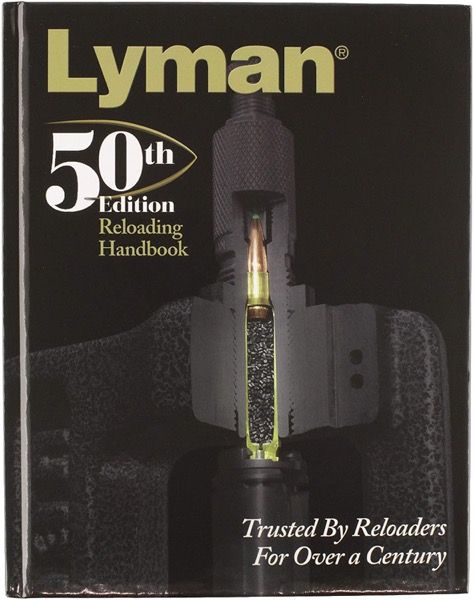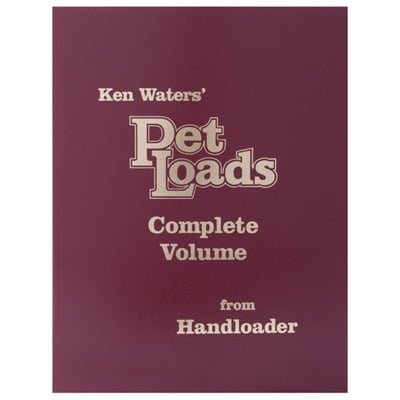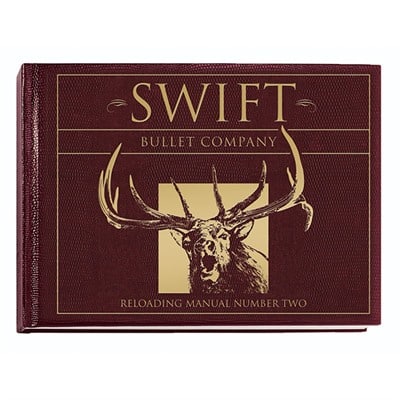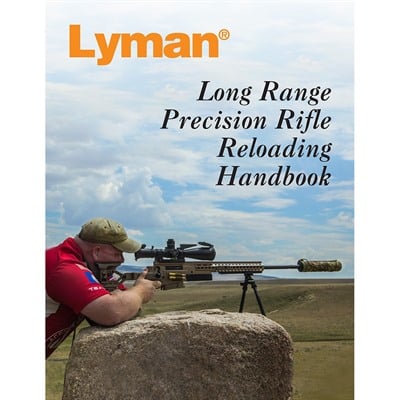At a Glance: The Best Reloading Manuals
- OUR TOP PICK: Hornady – Handbook Of Cartridge Reloading 10th Edition
- Berger Bullets – Reloading Manual 1st Edition
- BEST BUDGET OPTION: Speer – Speer Bullets Manual 15th Edition
Comparison of The Best Reloading Manuals
| PRODUCT | DETAILS | ||
|---|---|---|---|
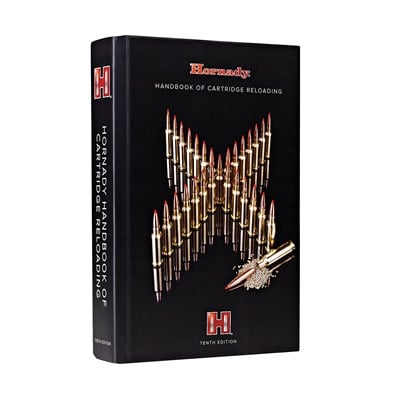
Our Top Pick
|
Hornady – Handbook Of Cartridge Reloading 10th Edition |
|
View Latest Price |
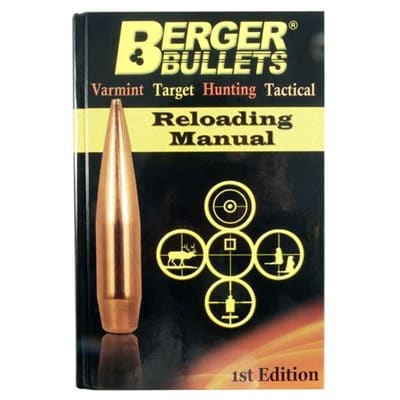
Our Top Pick
|
Berger Bullets – Reloading Manual 1st Edition |
|
View Latest Price |
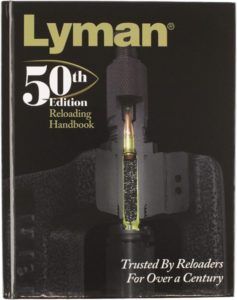
Our Top Pick
|
Lyman 50th Edition Reloading Handbook Hardcover |
|
View Latest Price |
If you’re new to reloading you are probably feeling a bit overwhelmed. I know I was when I first started. Whilst there are many great reasons to start reloading and it’s a great hobby to have, it does require a bit of research beforehand to know what equipment you need, how that equipment works, and how to reload safely and correctly. Most importantly, reloading manuals offer you safe, effective, and proven recipes to create rounds in the caliber of your choice.
Luckily there are many great sources of information out there that can help you get your head around the process. The only problem is knowing which source of information is the most reliable. I would recommend every reloader to own at least one reloading manual.
The 8 Best Reloading Manuals
To help you find the best information without having to spend hours surfing the web, I have reviewed eight of the best reloading manuals that are on the market in 2020. This list will help you to confidently choose the best reloading manual for you, allowing you to get started with your new hobby straight away.
Hornady – Handbook Of Cartridge Reloading 10th Edition
Hornady is a key player in the reloading industry. Its handbook of cartridge reloading is a high-quality and reliable manual for anyone who is wanting to master the reloading process.
The 10th edition which was released in 2016, has over 1,000 pages consisting of reloading data, techniques, and bullet information. This includes an impressive lineup of new and expanded data that incorporates a vast, up-to-date range of powders, bullets, and calibers compared to the previous editions.
This book is divided into two sections, the theory of reloading and a compilation of load data. Some parts of the first section do seem a bit outdated. The beginner’s how-to section is great and very easy to read and understand, however, I found not all of it was relevant to my needs.
For me, the best part of this manual is the information on the reloading process as well as the large section on the safety steps to follow. This is vital information for beginners and also a good refresher for seasoned hand loaders. Another highlight of this new edition is its in-depth, easy-to-understand explanations of internal, external, and terminal ballistics.
Although I’m not sure this is the best reloading manual for beginners, it would be a great manual for more experienced reloaders as I found certain parts of the book such as some parts of the “Theory of Reloading” portion were too advanced for beginners but very interesting for those with experience.
Pros
- Up to date range of powders, bullets, and calibers
- Thorough and easy to understand explanation of the reloading process
- Great safety tips
- Expert descriptions of over 300 bullets and 200 calibers
- Real statistics, data from actual testing
Cons
- Not all parts of the manual are beginner-friendly
- Some sections seem a bit outdated
- The calibers and powders this book features are solely Hornady, with no other brands featured
Berger Bullets – Reloading Manual 1st Edition
Published in 2017, this 829 page manual from the renowned bullet manufacturer Berger Bullets features data for over 70 of the most popular centerfire rifle cartridges used today. There are also some awesome technical articles on a wide range of subjects from a handful of industry experts including Walt Berger himself. I feel this is the main highlight of this manual.
There’s a thorough information section including a valuable “Handloading Basics” chapter which is great for new shooters. Moreover, the manual features a full biography of Walt Berger which I found super interesting.
I found this book a great overall introduction to rifle shooting and certainly a fascinating read. However, this manual does not go quite as deep into reloading as other manuals on the list do. One last point, there is no load data for anything above .30 cal. This is because it only covers the Berger bullet range, so if you’re looking to hand-load very large caliber rounds, this manual may not be the most beneficial for you.
Pros
- Data on over 70 rifle cartridges
- Technical articles from industry experts
- Handloading basics chapter for beginners
- Great overall introduction to shooting
Cons
- Like many manufacturer manuals, it only covers its own range of bullets
- No data coverage of large calibers
Speer – Speer Bullets Manual 15th Edition
This recent release from Speer is one of the most up to date reloading manuals on the market at the moment. It offers comprehensive data on almost every powder currently available. Published in 2018, this 956-page hardback manual offers data on more than 120 rifle cartridge types. Each cartridge has at least a few pages of detailed information, including 6 pages of new data on the 6.5 Creedmoor, plus data on 12 other new cartridge types.
Other highlights for me were the common pitfalls to reloading, a guide to automating the reloading process, and troubleshooting techniques. There are some great articles on the history of reloading by professional shooters Julie Golob and Jim Gilliland, and reloading recipes for new Gold Dot rifle bullets.
I like the fact that this manual is so new that it features data on the most popular rounds today, but it’s a shame that this data is only of Speer bullets. If you use Speer components then this is quite possibly the best reloading manual for you.
Pros
- One of the newest releases on the market
- Contains data on over 120 cartridge types including 13 new cartridges
- Features articles by professional shooters Julie Golob and Jim Gilliland
- A complete guide to reloading techniques and concepts
Cons
- The data listed is based on Speer’s bullets only
- There is not much unique information
Nosler, Inc. – Reloading Manual 8th Edition
The 800-page 8th edition of Nosler’s reloading manual was published in 2016. This is one of the easiest manuals to read thanks to its graphics and clear layout. I found some other manuals to feel like a college textbook but this one seems to have been designed to offer a much more enjoyable and lighter read.
The beginners’ how-to section is my personal highlight. This is a great informative guide on getting started for novice reloaders. I was particularly impressed with the explanations of the different types of bullets and powders, and the reasons why you should choose each one.
Another nice feature is the section that explains how to choose the most accurate powder and get the most reliable load. I found some great recommendations here.
There is one downside to this book. Like most others, this reloading manual focuses primarily on their own products. That being said, I don’t use their products but I still took away some valuable information from their comprehensive list of powders.
In conclusion, I would recommend this book to all beginners learning how to reload. I believe it to be one of the top reloadings manuals for helping shooters get started with the reloading process.
Pros
- Easy to read
- Nice layout and photos
- Great how-to section for beginners
- Detailed explanations and helpful recommendations
Cons
- Focused on Nosler products only
Lyman 50th Edition Reloading Handbook Hardcover
Lyman is one of the legacy brands and this is a must-read for every reloader from beginner to advanced. Comprehensive instructions on how to reload, advance case preparation techniques, and how to use Ballistic coefficient.
Lymans 50th Edition features the largest selection of bullets from Barnes, Hornady, Remington, Sierra, Speer, Swift, and Winchester. Newly added cartridges include: 17 Hornet, 6.5 Grendel, 6.5 Creedmoor, 6.5-284, 26 Nosler, 28 Nosler, 300 AAC Blackout, 300 RUM, 338 RMC, 450 Bushmaster, 458 SOCOM, and 50 Beowulf
Contains 400 or so pages of Reloading data, featuring what I think are helpful bullet synopsis. There’s also a very nice section that describes almost all of the powders by the brands most commonly available – Alliant, Hodgdon, Accurate, IMR, Ramshot, Winchester, VihitaVuori. Just short descriptions that talk about burn rate, and best applications.
This book doesn’t have many varieties of a particular caliber. for example 308. and there’s no loads given for 147 grain. If you own some type of super rare bullet, it’s probably listed but theres not a lot of variety in terms of particular calibers
Pros
- How-To-Reload Tutorials
- Detailed color photos of reloading process
- Featured Articles By Industry Experts
- Very user friendly
Cons
- limited number of cartridges covered
- Published in 2016
Wolfe Publishing – Pet Loads Complete Volume
This is a comprehensive 1166 page manual drawn from the 30 years Ken Waters spent writing columns in Handloader magazine. There is a wealth of knowledge within these pages.
The book contains loading procedures, tables, tips, precautions, and commentary as well as details of over 150 cartridges. In this guide Waters delves into the science and background behind every load covered, as well as offering in-depth safety advice highlighting what to avoid. In fact, safety is a key focus of this book and is something emphasized in each chapter. Because of this, it’s an informative and useful manual for beginners and experienced shooters alike.
Because it is such a comprehensive and thorough manual, it is not an easy read and I did struggle at times. This is such a shame because it contains so much great information but it could have been formatted and designed with a more accessible and easy to read layout.
That being said, I would still advise anyone to purchase a copy. Whether you’re new to the reloading process or you’ve been doing it for years, this manual deserves a spot on your bookshelf.
Pros
- A complete, comprehensive guide to reloading
- Strong emphasis on safety
- Science-backed information
- An in-depth history of every load
Cons
- A difficult read
- One of the most expensive manuals on the list
- Published in 2008, it’s not the most up to date manual
Swift Bullet Co. – Reloading Manual-2nd Edition
This manual has been created by knowledgeable hunters with decades of field and reloading experience. I loved the layout of this manual, especially the illustrations. I also found it to be very well written. Plus, at 475 pages there is a great amount of information without being overwhelming.
The manual contains load data for 86 rifle cartridges as well as hunting ballistics charts for each one. The load data is well organized with powders listed by brand, and three powders from each (IMR, Alliant, and Hodgdon).
I found some great articles in this book. One personal favorite was about the challenges of long-range shooting and the effects of downrange ballistics. The manual also gives several formulas for calculating energy, drift, and drop compensation. On top of this, the practical use and validity of each formula are explained too.
What disappointed me about this manual is its lack of caliber data. Compared to the Nosler reloading manual, it does not have anywhere near as many calibers and only features the standard ones. However, I still feel this book offers some unique information and articles and is a great manual to own.
Pros
- Great layout and illustrations
- Has some unique and well-written articles
- Load data for 86 rifle cartridges
- Powder data from 3 companies
- Includes many useful formulas
Cons
- Lack of caliber data
- Quite expensive for a short book
Lyman – Long Range Reloading Manual
This reloading manual from Lyman is great for those getting started with long-range precision shooting. The book is for target shooting rather than hunting. It features some great, well-written articles from top PRS shooters and industry experts to help amateur reloaders fine-tune their hand loads for the best long-range performance.
The manual contains all the information you need for safe precision reloading of the most popular long-range calibers used in the Precision Rifle Series and Extended Long Range competition shooting.
This is not the most comprehensive manual for data but it does list specific load data for a limited number of calibers and bullets. Though this book is good for what it is, I did feel that it is a bit short on content, and it would serve as a useful additional book to have if you are interested in long-range precision, rather than a stand-alone ultimate reloading manual.
Pros
- Great for target-type shooters
- Nicely written articles from industry experts
- Features target bullets from Berger, Lapua, Sierra, and Hornady
- Includes pressure and velocity data
Cons
- Only useful for long-range precision reloaders
- Limited load data
- Feels short on content and information
Why Do I Need A Reloading Manual?
If you are new to reloading, purchasing a reloading manual is not just helpful, but is vital. When learning anything new, a certain amount of study is required before you try to practice the skill. Even if someone has taught you the process, I would still recommend studying a bit before going it alone. Here’s why:
- Reloading manuals give you a great introduction to the hobby of reloading at a relatively low price.
- You will learn how to reload, and the necessary components needed to make loads for different purposes in each caliber.
- With a manual, all the information you could ever need is in one place.
- Reading a manual allows you to study and learn in a structured way, something that can be difficult when navigating various articles and videos online to learn a specific process.
I know many reloaders use the web to search for information about the process. While you can find many great articles and videos online, much of this information can be incomplete and it is difficult to determine how credible and reliable it is. However, all of the manuals on this list are composed and written by top industry experts with years of experience, therefore, you have complete assurance that the information is coming from a credible source.
Benefits of Investing in a Great Manual
Manuals are not just for beginners. They can be just as useful to experienced reloaders as they can be to beginners. Manuals don’t just teach you how to reload but they include much useful information for fine-tuning your reloading process. Here are the top 2 benefits of investing in a great reloading manual:
Provides safe load recipes
- While you could learn how to reload by watching Youtube videos, only a reloading manual will give you all the recipes you could possibly need.
- You can have much more trust and assurance in the recipes found in a manual.
- Due to the importance of safety when it comes to reloading, as shooters we need to ensure that the recipes we use to reload are completely safe.
Provides data you need to get the performance you want
- Manuals provide comprehensive load data on reloading any type of caliber.
- This data is given by industry experts and experienced reloaders.
- This allows you to fine-tune your recipes and reloads to increase performance levels.
Are All Reloading Manuals The Same?
As you can see from this list of reviews, every manual offers something unique and specific. The main difference is the brand that the book is from. The data listed in a manual from Lyman will be either mainly or solely Lyman products. This is the case for most reloading manuals.
Because of this, if you’re using reloading products or equipment from one specific manufacturer, it makes sense to buy the manual of that brand.
You can also get load-specific manuals.
- These reloading manuals are made for a specific type of caliber.
- They are a worthwhile supplement to the traditional load books but they tend to be updated less frequently, and some have not been updated in a long time.
- Because of this, I would recommend you check the load data found in these books with other references.
What to consider when choosing a Reloading Manual
When deciding which manual is the best reloading manual for you, there are certain things that you should take into account. Considering the four points below will ensure that you do not end up with a manual that’s not suited to your needs and to the type of caliber that you work with.
Personal knowledge
Different manuals cater to different expertise levels so consider what your level of knowledge and experience is.
If you’re a beginner:
- Some manuals are dense in load data but I would recommend that you look for one that has detailed sections explaining the basics of reloading such as how ballistics works and the types of powders that exist.
- When getting into reloading it’s tempting to overlook these things but they are what set the foundation upon which you will build your knowledge.
- You will also want to opt for a manual that is not too complicated or overwhelming.
Luckily, there are some very easy to understand manuals on this review list such as the Swift Bullet reloading manual and the Nosler reloading manual. As well as providing clear instructions that will allow you to reload your first bullet as smoothly as possible, these manuals feature great illustrations and photos, helping you to absorb the information quickly.
If you’re an experienced reloader:
- Make sure the manual you choose still contains important warnings and safety advice to refresh your memory on reloading safely.
- You’ll want to opt for a manual that is heavy in load details and just quickly recaps the basics.
- In general, what’s best suited to you is a manual that can serve as a handy reference book, where you can easily find information, load data, and recipes.
As an experienced reloader, I have found the Wolfe Publishing pet loads manual and Hornady’s handbook of cartridges to be valuable reference books that I keep by my bench at all times.
Caliber Variety
Honestly, this is one of the most important things to consider when buying a manual. To get the best reloading manual for your specific needs, you will need one that caters to the type of caliber you work with. Here are some points to consider:
- Some manuals cover a diverse range of caliber types which is great for reloaders that like to explore them.
- The downside to these manuals is that they do not tend to offer detailed data on the calibers they feature.
- Other manuals feature a smaller range of calibers but go a lot deeper into them.
- They provide data on various powder mixtures and explain the pressure and how to adjust the seating and charge.
It’s a well-known fact that most manuals’ load data is focused on their own products. If your products are all from the same brand this makes your decision easier, but if you use multiple brands this can be a bit annoying. Therefore, it’s worth doing some research to find the manuals that are best suited to the calibers you shoot.
I have found Hornady’s handbook of cartridges to have one of the biggest ranges of caliber types, however, the data is all from Hornady products. Lyman’s manuals feature powder and caliber data on other popular manufacturers. This makes mixing easier and means you don’t have to stick with just one brand.
Read our guide on the Best Powder Measures here!
Actual Raw Data
This is something many reloaders will not think to consider, and something I’ve only thought about recently myself. Many manuals provide data of tested bullets but it’s not clear if this is raw data taken from an actual test, or if it’s copied from other manuals.
Of course, if we’re looking for the best reloading manual on the market we want one that uses data from tests that they’ve done themselves.
As most manuals produce multiple editions with updated information, comparing the data shown from the same tests in older versions will make it clear how accurate and up to date, the data is. Tests carried out at different times should show at least a slightly different result, even though the same caliber and powder were used.
One Is Never Enough
I’m sure most experienced reloaders will agree with this. In fact, most fellow shooters I know have a handful of manuals. If you are new to reloading it’s certainly best to start with one manual. As already discussed, buying one complete reloading manual targeted to beginners gives you more than enough information to begin with. Following just one handbook will also prevent you from getting overwhelmed.
However, once you have been reloading for a while, you will naturally want to purchase a second manual, especially one from a different brand and author. Even experts will advise you to do this.
Although each manual has it’s own data to display, it’s always best to compare information from multiple sources and cross-check between manuals. This will also help you analyze the best charge to use based on the load data and thereby create more effective loads.
Why Are There So Many Editions?
Manufacturers create newer and better ammunition every year. Releasing new editions of their manual every couple of years allows them to update the load data in the book, listing their most current, up to date products.
However, sometimes the new editions do not appear to be much different in the rest of the content. Sometimes it is only the load data that is updated, and the other sections are only slightly updated. If this is the case it can seem a bit pointless to keep buying the new releases.
Personally, I do not think it’s worth owning all editions of a manual, especially if you are using the same products and reloading your ammo in the same way. Sometimes there will be a new release where the majority of the book is updated and there is lots of fresh information. In this case, I would be keen to own the new edition.
If you purchase newly released ammunition from a manufacturer, of course, you will want to be able to find the load data for it somewhere. If the new edition features detailed load data for your products, it is certainly worth buying it. But if it is just load data you are after, you may be able to find this information online instead.
Can a brand-specific reloading manual be used generally?
The answer to this is yes and no as many sections of the book can but certain parts cannot.
The sections that can:
- General reloading information
- ‘How to’ sections
- General safety advice
- Technical articles
- Theory and history of reloading
The sections that cannot:
- Load Data
Load data can vary significantly across brands. This is due to differing bullet-design and different tolerances as well as other factors. So, specific instructions exist for particular bullet brands. This is why manuals tend to list and focus solely on their products and do not advise you to use that data for other manufacturers’ products.
What are the most important reloading safety precautions?
- Wear safety goggles/glasses with side shields to prevent injury from accidental primer explosion.
- Ensure you are free from distractions and able to focus fully on the process.
- Always use a reloading scale to reload and do not try to guess measurements.
- Use a scale designed specifically for reloading purposes and not a kitchen or postage scale.
- Check that the scale is zeroed before weighing any powder.
- Carefully read and follow reload data instructions from your manual.
- Be cautious of lead exposure as most primers and bullets contain lead. Always wash your hands with soap after handling ammo to avoid exposure.
- Wear a dust mask when vacuuming and emptying your vacuum cleaner to prevent exposure to lead particles.
- Preferably reload in a carpet-free room or at least away from any carpet as lead residue can gather in the carpet fibers.
- Keep your reloading area tidy and store all equipment, powder, and primers away safely when not using them.
Which is the best reloading manuals?
After reviewing all eight books, I do not feel that there is one specific best reloading manual for every reloader, but there is definitely one for beginners and one for experienced reloaders.
If you are new to reloading, the Nosler Reloading Manual, 8th edition will be your best choice. Without a doubt, this is the most beginner-friendly manual on the list thanks to it’s easy to read layout and informative illustrations. Its beginners’ how-to section along with the detailed explanations and helpful recommendations will arm you with a wealth of knowledge and safety tips. This will give you the confidence you need to get started with your new hobby.
For those who already have some experience, Wolfe Publishing’s Pet Loads: Complete Volume will take your reloading to the next level. This book is aimed at you as it skims past the basics and goes in-depth into the history of every one of the 150 cartridges it features. Additionally, it offers a lot of science-backed information and emphasizes the importance of safety, something that we can forget as we become more used to the process.
Lastly, as I previously mentioned, consider who most of your ammunition products are from, as a manual from the brand name you use the most will be of the most use to you.

